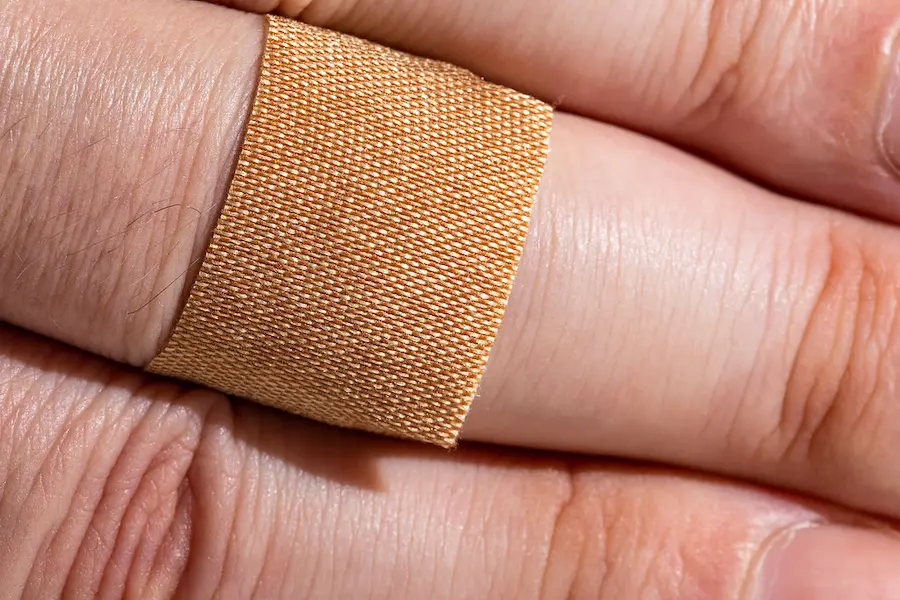When an injury isn’t too severe, you can opt to bandage your knuckle at home. Bandages provide protection and support while the injury heals. Knowing how to wrap your knuckle bandage is key to healing and preventing further injury.
Table of Contents
Why Bandage Your Knuckle
Covering your knuckle with a bandage protects the wound from infection. The bandage acts as a barrier and keeps the area clean. A knuckle bandage can help reduce pain from an injury by keeping the area stable and compressed. This also reduces sensitivity. Bandaging keeps the wound covered to reduce the risk of bacteria entering the sight. A visible bandage on your knuckle is a reminder to be careful with the area. It cues you to avoid excessive movement or pressure that could irritate the injury.
Step-by-Step Guide To Bandaging Your Knuckle
Applying a bandage on a knuckle is a simple process that can be done at home. The following six steps will help guide you through the process:
- Gently wash the area with soap and water to remove any dirt. Pat dry with a clean cloth.
- Apply a thin layer of antibiotic cream or ointment to help prevent infection.
- Choose a bandage that is slightly larger than the injured area. The bandage should be wide enough to cover all of the wound with a few extra centimeters around it.
- Peel away one side of the adhesive backing. Gently press the sticky part onto your skin. Avoid stretching the bandage or pulling on the skin too much, as this can cause further irritation.
- Use your fingertips to press down firmly on the edges of the bandage. There should be no air bubbles or gaps along the sides.
- Change your bandage at least once per day and whenever the bandage becomes soiled by food, dirt, or other substances.
Precautions
- Use a sterile bandage to prevent infection.
- Avoid pulling the bandage tight. If the knuckle bandage is too tight, it will limit blood circulation.
- Use bandages with pre-cut tabs specifically designed for wrapping around wounds on the knuckle. Other types of bandages may not adhere properly to the curved surface.
- Do not bandage an infected wound. Look for redness, swelling, tenderness, pus, and other signs of infection.
Choose the Right Knuckle Bandage
Choose the proper bandage for your knuckle to provide the necessary support and protection. Secure your skin with bandages that match your skin tone for a discreet look. Choose the right size bandage. Too loose of a bandage can cause it to slip, and too tight of one can reduce circulation. Use wider and thicker padding over larger knuckles. Opt for a thin material for smaller knuckles like those at the tips of your fingers. Opt for waterproof bandages if your knuckle will come into contact with water or sweat.
When To Seek Medical Attention
If your wound does not appear to heal after a few days or shows signs of infection such as redness, swelling, pain, or pus, seek medical attention. A doctor can determine the cause and provide appropriate treatment for your injury. Consult a medical professional if you are experiencing any other symptoms, such as fever or dizziness.

